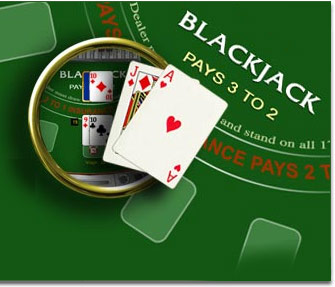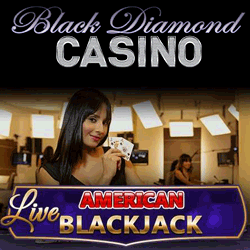The Blackjack Hall of Fame
Blackjack Hall of Fame Members
In 2002, an eclectic selection of, appropriately enough, 21 blackjack authors, experts, and players were nominated by publishers, fellow players, and casino personnel to the Blackjack Hall of Fame. The public was allowed to get in on the action via the internet, with the final votes being tallied at the 2003 Blackjack Ball in January (an annual gala event held every year at a secret location to keep away casino spies and nosy detectives).
The Blackjack Hall of Fame is dedicated to honoring exceptional people in the field and educating the public about great players whose achievements have sometimes gone unnoticed by the public due to issues of secrecy and security.
Voting
The primary voting for the Blackjack Hall of Fame is carried out by professional players. The reasons for this are twofold. First, professional players are the only ones who know the full scope of the accomplishments of their peers, both in and out of the casino. This is due to the fact that some achievements must be kept from the public in order to keep word from reaching the casinos.
Second, the founders felt that professional players, whose very livelihood depends on such knowledge, are the best judges of which authors and theories have been truly original and had the greatest impact on the game, especially on the players' ability to beat the house.
Anyone who has derived his/her primary income from the game for at least five years is eligible to vote. The public gets a single vote, as determined by online voting, plus select casino honchos (who aren't allowed to attend the Blackjack Ball) get to vote via absentee ballot.
Blackjack Hall of Fame Inductees
The first seven inductees into the Hall of Fame were:
Al Francesco
Al Francesco Practically invented team play (while creating the "Big Player" concept) at blackjack and taught the legendary Ken Uston how to count cards. One of the most respected players of all time.
Stanford Wong
Standord Wong is Author of the acclaimed Professional Blackjack, Wong is a brilliant mathematician who can seemingly analyze and beat any game.
Peter Griffin
Peter Griffin is the math genius who first used mathematical shortcuts developed by statisticians to analyze and compare blackjack card counting systems. These ideas are still widely used today and have influenced generations of gamblers.
Ken Uston
For two decades, Ken Uston played professional blackjack at the highest level and utilized a vast array of techniques, including card counting, BP teams, hole card techniques, and concealed computer play. Authored the highly influential The Big Player, exposing the secrets of the big player teams and forever changing how the game was played.
Edward O. Thorp
Edward Thorp wrote the legendary Beat the Dealer and is considered the father of card counting.
Tommy Hyland
For more than 25 years, Tommy Hyland has been running the longest-lasting and most successful blackjack team in the history of the game. His team has literally won millions of dollars from casinos around the world.
Arnold Snyder
His first book, The Blackjack Formula, revolutionized card counting by revealing, for the first time, the importance of penetration to a card counter's win rate.
The following year, at the 2004 Blackjack Ball, two more inductees were added:
Keith Taft, a brilliant inventor who has spent more than twenty years beating blackjack games with his high-tech devices, and respected author Max Rubin, whose 1994 book Comp City exposed techniques that even non-counting players could use to get an advantage.
In 2005, Julian Braun and Lawrence Revere were inducted. Braun used high-speed computers to calculate billions of simulated hands, allowing authors like Thorp and Revere to develop their winning systems. Revere, meanwhile, wrote Playing Blackjack as a Business, simplifying and improving on techniques introduced by Edward Thorp.
In 2006, James Grosjean was inducted. He wrote the instant classic Beyond Counting and is also known for winning various lawsuits against casinos on the grounds of civil rights violations. He is also beloved in gambling circles for forcing the hated Griffin Detective Agency into bankruptcy.
The founders eventually passed the task of nominating deserving candidates each year to the Hall of Fame members. They submit names to each other, with biographical information and reasons for consideration. There is no limit to the number of names that can be submitted, and then all seven members vote on their top seven choices, with all members' votes counting equally. From 2006 onward, it was decided that only one new member would be inducted into the Hall of Fame each year, in order to preserve a sense of exclusivity.
The Barona Casino - Home of the Blackjack Hall of Fame
In 2003, the Barona Casino created the physical Hall of Fame, similar to the Binion's Horseshoe's "Wall of Fame" for poker players. Each inductee has a plaque with his photo and a few words about his contributions and accomplishments. There is also a museum with cheating devices on display.
The Barona Casino, which sponsors the Blackjack Hall of Fame, has awarded each inductee a permanent lifetime comp for full room, food, and beverage in exchange for each member's agreement never to play on Barona's tables.
More Blackjack Players: Stanford Wong - Hollywood Dave Stann - Sam Vaughn - Edward Thorp - Cathy Hulbert - Michael Konik - Keith Taft - Anthony Curtis - Peter Griffin - Ken Uston - Richard Munchkin - Ken Einiger - Tommy Hyland - Al Francesco - Eleanore Dumont - Ken Smith - Lawrence Revere - Steve Forte - Barry Meadow - Brian Zembic - Big Chuck Gorson - Erica Schoenberg - James Grosjean - Max Rubin - Henry Tamburin - Russ Hamilton - Jimmy Pine - Joanna Wlodawer - Joe Pane - Kevin Blackwood - Blackjack Hall of Fame - MIT Blackjack Team


 Slots Capital
Slots Capital


